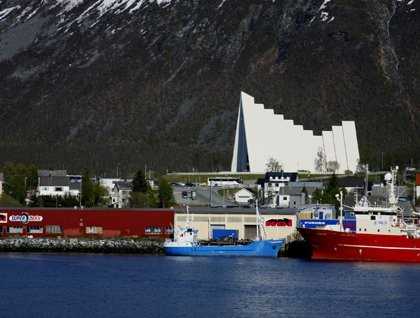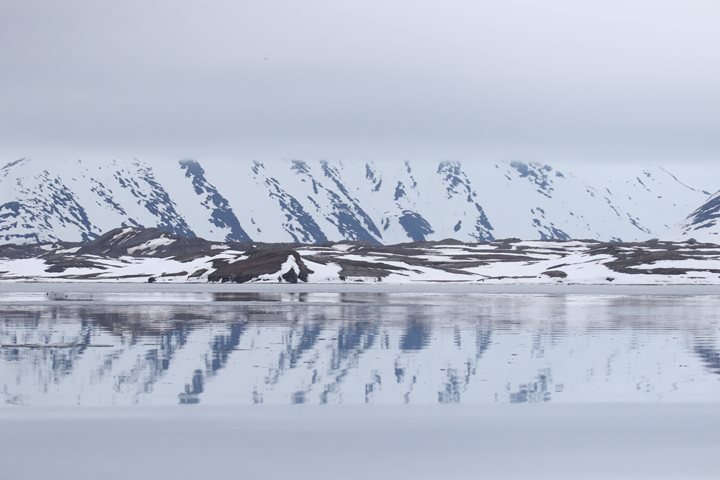We tied up at the waterfront in downtown Tromso this morning. With a population of just over 90,000 this is the largest city in northern Norway. Located on the island of Tromsoya, the settlement has been joined by bridge to the mainland since 1960. The earliest evidence of human presence in the area dates back some 9,000 years. The Vikings established a base here, and by the 15th century a thriving trading town had developed with strong links with Bergen.
Breakfast finished, we boarded motor coaches and in the company of local guides began our explorations. The city boasts a number of superb museums. Located 186 miles above the Arctic Circle, Tromso was the launching point for many polar expeditions, including those of Norway’s national heroes, Fridtjof Nansen and Roald Amundsen. It has been aptly called the “Gateway to the Arctic” and one of the highlights for us was visiting the Polar Museum. Excellent displays charted the history of polar exploration over the centuries in addition to the exploits of whalers and trappers in the far north. It was here in Tromso that expeditions were provisioned, and final preparations made, before heading off to chart new lands and conduct important geological, metrological, and biological investigations.
We also made a visit to the Tromso University Museum. The extraordinarily rich cultural heritage of the Sami is showcased here. Traditionally reliant on the resources of the sea, these are one of the Arctic’s indigenous peoples. They continue to herd reindeer, which they use for food, transport, and skins for the production of clothing. Their consummate skills in tailoring and other crafts are readily apparent from the rich array of costumes and other items on display. These gave us an insight into their remarkable lifestyle. In addition there were excellent exhibits on the geology and natural history of Northern Norway.
Our other main visit this morning was to the Arctic Ocean Cathedral, which opened its doors for worship in 1965. Immediately eye-catching, it was designed by Jan Inge Hovig. The entire east wall of the cathedral is dedicated to the impressively large stained-glass window depicting the Second Coming, the work of Victor Sparre. Light diffusing through the thousands of individual glass pieces bathed the interior in an almost ethereal multi-coloured glow.
The remainder of our stay was spent at leisure in this attractive city. In the late afternoon, with all guests safely back aboard, National Geographic Explorer sailed off towards the Barents Sea, saying farewell to our dear friend with three blows of the ship’s horn.







